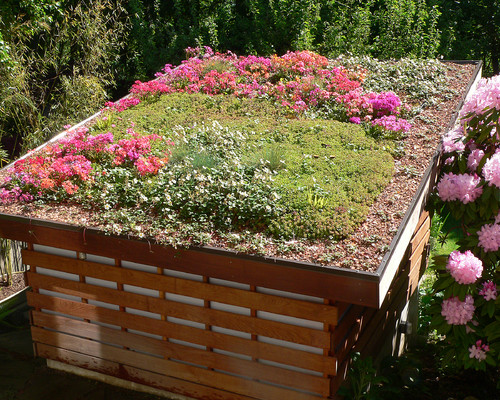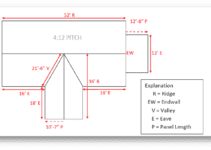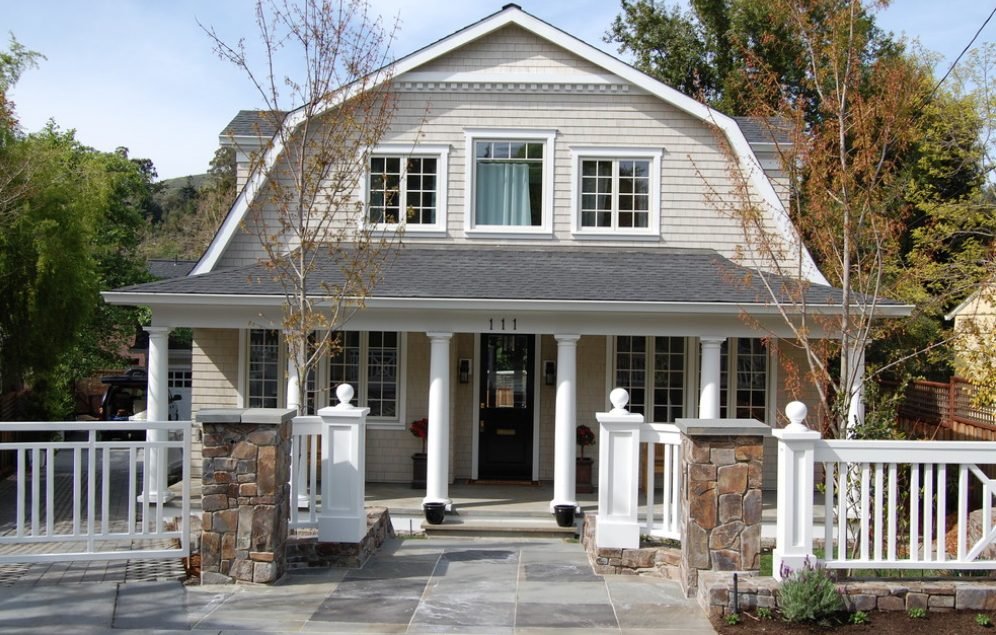In the most cities of the world it is a lack of green spaces. This situation could be improved by installing green roofs.

Photo by Mohler + Ghillino Architects – Look for landscaping design inspiration
A new ecosystem will be created on the roof with micro-organism, insects and birds.
And not only that.
The flow of rainwater in the city will be improved, the air will be more clean, the apartments under the roof of the building will no longer feel the summer heat and maybe the most important thing, removal of the greenhouse effect ( Homes and Buildings account for almost half of all greenhouse gas emissions ).
In Europe, Germany is the leader in this area, with over 150 million square feet ( 14 million ) of green roofs installed annually. The sewer systems were unable to prevent flooding caused by heavy rains and in ’70s modern green roof innovation began in Germany. Austria and Switzerland come in the second place.
In fact the green roof is the demand for light, air and sun, and fully embraced in Europe, is now an impact in North America.
In North America, thousands and thousands of green roofs have been established in cities as New York, Chicago, Toronto, Portland. But Vancouver, British Columbia, is the leader where roof gardens are installed to be accessed and enjoyed. It is true they are most cost intensive to construct, heavy in weight with deep soil profiles, maintenance intensive and they are mainly installed for environmental performance and visual improvement, but to be surrounded by nature means to be surrounded with health. Sometime we want a garden where we can plant flowers and vegetables or only for enjoyment. Unfortunately many times, the space does not allow us to have it. But now it is possible thanks to the green roofs. The disadvantage of green roof : it can cause the moisture of the walls and could aggravate and maybe destroy the roof as time passes, but in fact they are technical problems. They have been solved and it is already an approved system for creating living green roofs with no less than seven layers of insulating material retaining water and moisture, so as not to affect the structure of the building and a plus is with this roof system we solve the problem of building insulation= minus energy consumption. Born in Germany thirty years ago, today the idea of a green living roof is a global strategy after the International Network for Infrastructure and Green Roofs was founded.
The layers of a green roof system: →
←The Armaseam system ( Aluminum Rainwater and Cast Iron Rainwater System)
There are two types of green roof systems—extensive and intensive systems. An extensive system features low-lying plants such as succulents, mosses, and grasses. They require relatively thin layers of soil (1-6 inches), and plants usually produce a few inches of foliage. Extensive systems have less of an impact on the roof structure, weighing 10-50 pounds per square foot on average, and are generally accessible only for routine maintenance. Most residential applications are composed of extensive green roof systems. Intensive systems = big soil layer and there are designed to support larger plants including crops, shrubs, and trees. They require maintenance, and because of the plants used, and are much heavier than extensive systems—they range from 80 to more than 120 pounds per square foot. Intensive systems are typically designed to be accessible to building inhabitants for relaxation and enjoyment.
There is a wide variety of materials used for each component of the green roof system, depending on the chosen plants, type of system employed, climate, and underlying structure. Growing mediums include soils, peat and other organic materials, gravel. A drainage layer is required to adequately distribute water and prevent pooling that may or may not include filter media to ensure aeration. It this necessary to minimize the weight of the system,and for that the drainage layers are often made from plastic or rubber, but sometime may be made of gravel or clay. The waterproofing membrane is the critical component of the system and should include a root barrier to ensure the underlying roof surface will not not be compromised. If the weatherproofing material is not root-resistant, is mandatory an additional layer.
Usually, plants used in green roof applications must be easy to maintain and tolerant of extreme weather conditions and must have relatively shallow, fibrous root systems. The are some conditions to be applied: plants should be resistant to diseases and insects, and not generate airborne seeds. Climate-appropriate succulents, mosses, and grasses are the best suited for extensive green roof systems. These types of plants are available in a variety of colors, in both deciduous and evergreen options. Many nurseries throughout the country specialize in vegetation for green living roofs.
Thermal resistance of living green roofs will reduce the heating and cooling costs of the building. The ambient temperature around the roof will be reduced, decreasing the building heat island effect.
The ambient temperature of the roof surface will be reduced slowing the transfer of heating inside the building, reducing cooling costs. And do not forget it also provide more insulation to the roof structure, reducing heating costs for the winter.
Green living roofs reduce the storm water by absorbing and retaining the water for the growing plants. The plants are filter pollutants for CO2 and can reduce air and noise pollution. They can protect the roof from extreme weather conditions and from ultraviolet radiation. That means a longer lasting roof system.
Building Return Eaves on Roofs | How To Build A House (howtobuildahouseblog.com)


